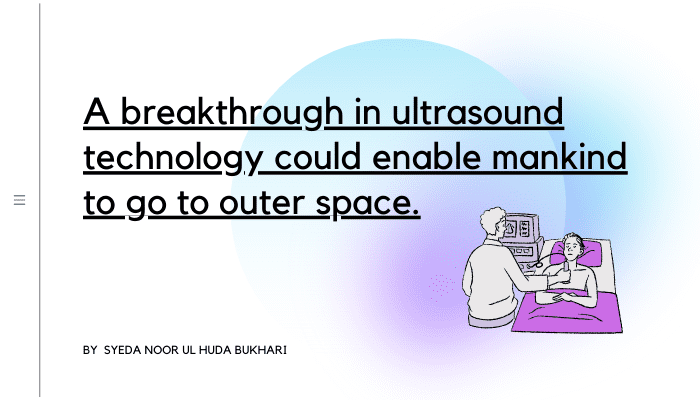A future in which humans are placed in hibernation to travel into space is one step closer after scientists demonstrated that they can use ultrasound to put mammals to sleep.

Many animals and birds can enter a torpor-like state in which they inhibit their metabolism and lower their body temperature to conserve energy and heat during periods of acute cold or food scarcity.
Scientists have argued that generating a similar state in humans could help safeguard patients with life-threatening diseases and allow astronauts to embark on long-distance interplanetary trips with fewer supplies since the 1960s.
Several science fiction films, including Passengers, 2001: A Space Odyssey, and Interstellar, have explored the subject of traveling through space in suspended animation.
Now, researchers at Washington University in St. Louis have demonstrated that they can induce reversible hibernation in mice by shooting ultrasound pulses into their brains, stimulating the hypothalamic preoptic part of the brain and causing their heart rates to decrease and their temperature to plummet.
Hypothermia and hypometabolism caused by ultrasound
The phenomenon is known as UIH (ultrasound-induced hypothermia and hypometabolism).
“Ultrasound-induced hypothermia and hypometabolism have the potential to address the long-sought goal of achieving non-invasive and safe induction of the torpor-like state, which has been pursued by the scientific community at least since the 1960s,” said Hong Chen, an associate professor at Washington University.
“Ultrasound stimulation has the unique ability to noninvasively reach deep brain regions in animal and human brains with high spatial and temporal precision.”
Torpor is a temporary period of reduced metabolic rate in animals, whereas hibernation is a long-term or seasonal rest.
The researchers developed a wearable ultrasound device that can be installed on the heads of rats and mice to stimulate the hypothalamic preoptic brain area, which is known to govern hibernation.
When the ultrasound was turned on, the rats’ body temperature dropped by about 3 degrees Celsius for about one hour. The mice’s metabolism also changed from using both carbohydrates and fat for energy to using only fat – a critical aspect of hibernation – and their heart rates dropped by roughly 47%. They also took in less oxygen.
When the researchers investigated what was producing the impact, they discovered that the ultrasound triggered an ion channel associated with metabolism and temperature.
Although mice can naturally enter torpor, the scientists demonstrated that the same procedure works in rats, which do not hibernate.
According to the researchers, the rat trials showed that the brain regions regulating hibernation are present in non-hibernating species, giving hope that the procedure could be utilized in humans.
The authors stated in the journal Nature Metabolism, “We demonstrated that ultrasound stimulation induced hypothermia in rats, which do not naturally enter torpor, implying that similar effects could be induced in humans.”
“UIH could pave the way for everything from new medical treatments to long-duration human spaceflight.”
‘Extremely significant breakthrough’
Martin Jastroch, professor of mammalian molecular physiology at Stockholm University, called the discovery a “huge breakthrough” in a linked commentary.
“Putting human metabolism ‘on ice’ could have multiple benefits, as it would preserve organs for transplantation or surgery or in patients in intensive care, reduce cellular damage during cardiac arrest and stroke, and potentially enable human hibernation for long-distance space expeditions, where travel times of 7-8 months are forecast to be required to reach our nearest neighbor planet, Mars,” he said.
“What appears to be a small step for this one research group may turn out to be a giant leap for humanity to exploit torpor-like states in medicine and possibly for deep-space travel.”

